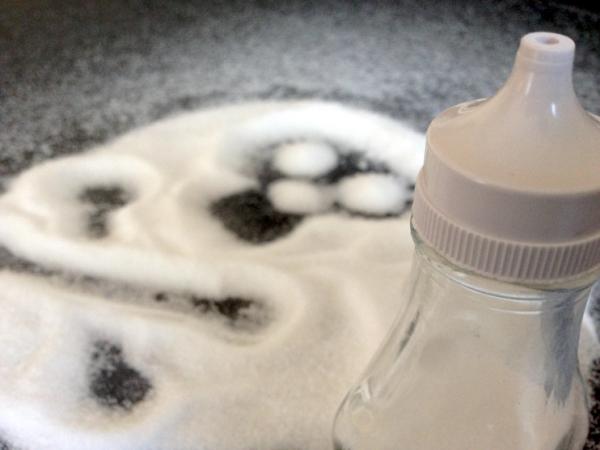
Reduce salt intake to lose weight
Salt is important for human body. Salt is involved in regulating the water content of our body. However, excessive salt intake can have negative effects and is dangerous for kidney, heart and it can even encourage high blood pressure. It also retains water in the body and can add to excess weight.
Sodium is a mineral found naturally in foods and is the major part of table salt. A healthy diet should include no more than 1500-2000mg of sodium per day. Salt is a taste enhancer of our food. Instead of using sodium packed and processed foods, we can try various ways to reduce our salt intake. Flavoring foods using various herbs, vegetables and spices helps in reducing salt intake. Here are some good tips to reduce salt intake.
“Salt preference is an acquired taste that can be unlearned”
1. Do not add extra salt in salads, fruits. Instead use pepper, olive oil and cumin powder.
2. Reduce salt or use no salt in lemon water (nimbu pani)
3. Avoid canned foods, salted chips, preserves, salad dressing and other processed foods that contains excessive amount of salt.
4. Avoid salted snacks like- Crackers, Potato chips, Corn chips, Pretzels, Tortilla chips, Nuts, Popcorn, Sunflower seeds.
5. Use more of traditional, grandma’s rock salt for cooking. It contains less salt.
6. Avoid convenience foods like: TV Dinners, canned raviolis, chili, macaroni & Cheese, spaghetti, commercial mixes, frozen prepared foods, fast foods and go with low salt popcorn or spiced popcorn.
7. Select spices or seasonings that do not list sodium on their labels, i.e. choose garlic powder over garlic salt.
8. Several vegetables like carrots, cabbage, spinach, onion and mushroom don’t need salt, you can cook them with little or no salt
9. Use herbs such as parsley, ginger, basil, rosemary, cilantro, mint, cinnamon, chives, tarragon and flavored vinegar to enhance the flavors and reduce salt.
10. Use curry powder that is a blend of several spices for seasoning. It contains as many as 20 different spices, including turmeric, coriander, pepper, chilli and cumin, which are inherently healthy.
11. Spice up your salads with fresh juice – lemon juice, lime juice or orange juice.
12. Put citric pepper into your dishes instead of salt. This seasoning perfectly supplements vegetable soups and pastas.
13. Remember – If a food item keeps well in the fridge for days or weeks, that is a tip off that the sodium content is too high. Salt is a preservative!
14. Choose fresh fruit and vegetables, as well, since they are very low in sodium. Canned and frozen fruits are also low in sodium.
15. When buying frozen vegetables, choose those that are labeled “fresh frozen” .
16. Understand food-labeling system. By law sodium content should always be listed on the label.
17. Compare various brands of the same food item for sodium content and find out the one which supplies less sodium.
18. When you select bottle spices for seasoning choose the one that has no salt. For example use garlic powder instead of garlic salt. Instead of using – table salt, seasoning salt, garlic salt, onion salt, celery salt, lemon pepper, lite salt, bouillon cubes, flavor enhancers use following : Fresh garlic, fresh onion, garlic powder, onion powder, black pepper, lemon juice, low-sodium/salt-free seasoning blends, vinegar.
19. Ask restaurants to put less salt in your food when you are dining out.
20. Some products will have high salt content but do not taste salty. Do some search on these foods and consume them less. For example, cottage cheese has more sodium!
21. Avoid excess use of pickles – Many pickles are loaded with salt. Salt is a good preservative and this is the reason pickles can be stored for a long, long time.
If we are used for salt taste, it takes many weeks or months to unlearn the taste. Slowly reduce the salt intake and you will see the change in your taste and body weight for better!
Sources:
- www.werindia.com
- https://www.kidney.org/
- Image credit: “Killer Salt” by Zeyus Media is licensed under CC BY 2.0
Author: Sumana Rao | Posted on: July 13, 2016






















Write a comment